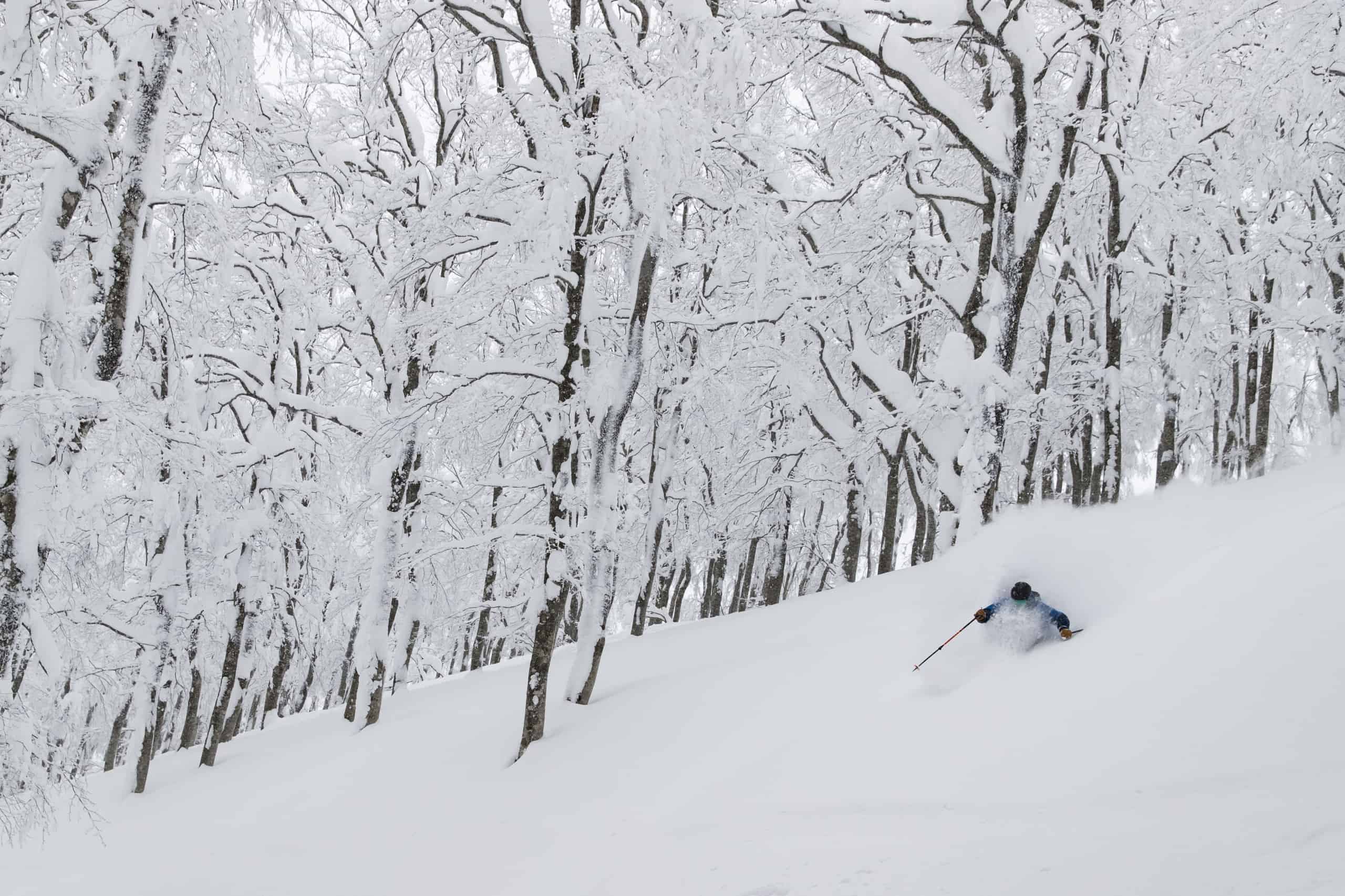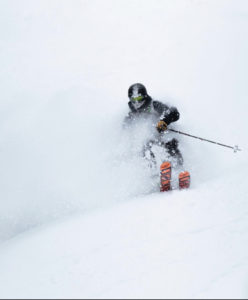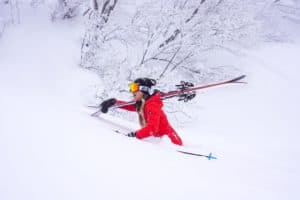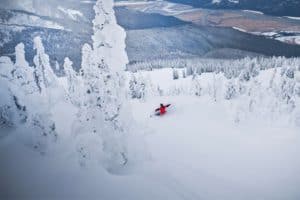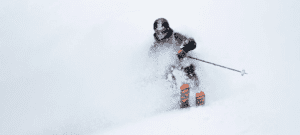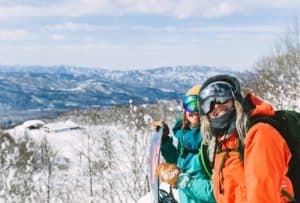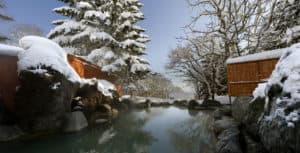Tohoku – Exploring Honshu’s Northern Region
Sponsored content
Mountainwatch | Jimmy Williams
Tohoku is the northern most region of Japan’s main island, Honshu, containing 6 prefectures from Fukushima all the way up to Aomori. It’s an area that’s resisted the influence of western tourism and is still a true, traditional Japanese experience.
Mountainwatch recently sent me away for the most jam-packed four days of my life with Tohoku tourism. From skiing new mountains to trying eccentric foods, training to be a Samurai and painting traditional dolls I sure did get the full experience. Before leaving my winter base in Nozawa Onsen I asked my Japanese friends who I live with what they like about Tohoku. The answers were onsens and light dry powder. So, with my onsen towel packed and my powder skis ready I was off.
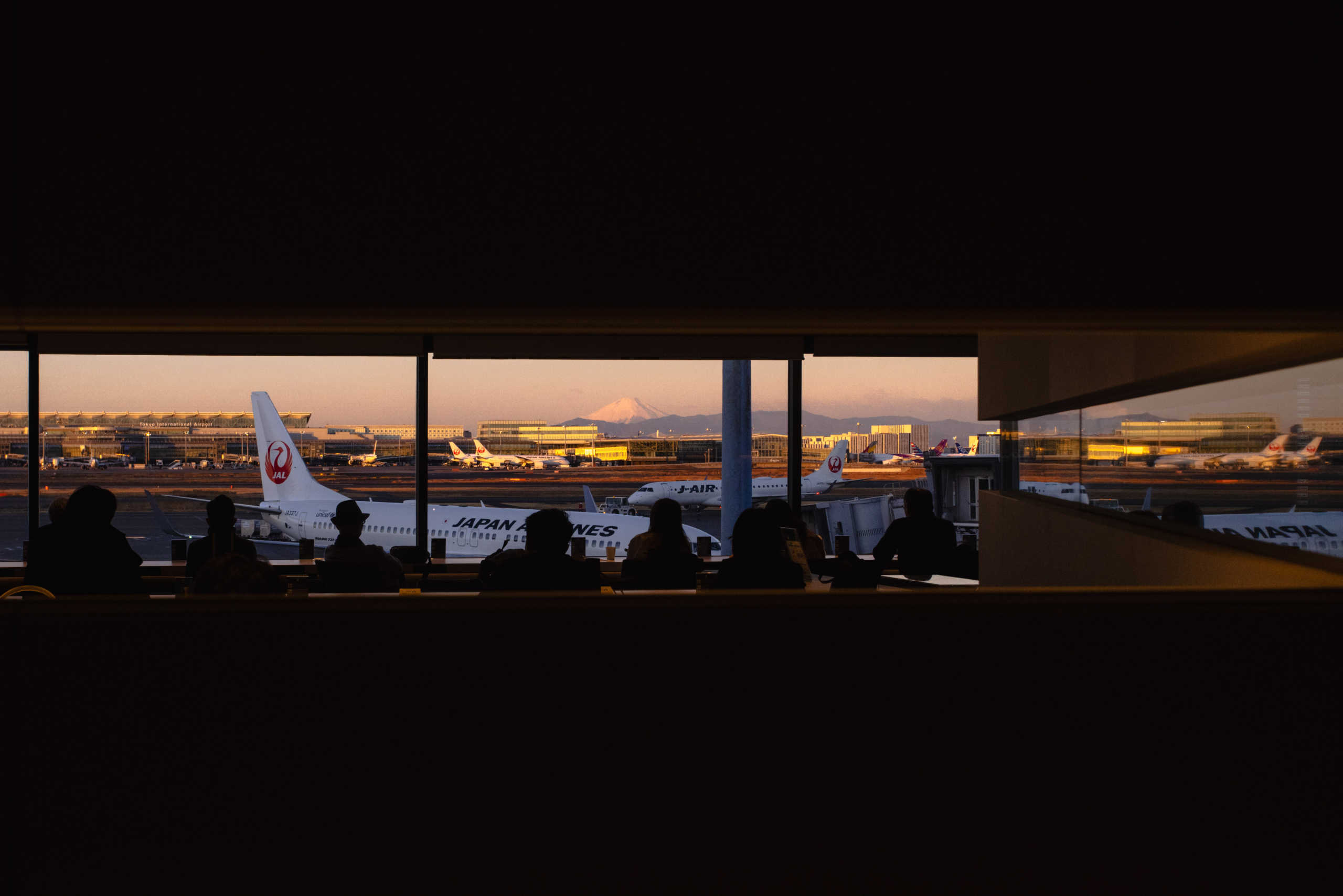
Day 1
My trip started in Tokyo jumping on a sunrise flight up to Yamagata airport. Mt. Fuji was out on show and a local man I met on the tarmac assured me that this was very rare and a great sign. I was met on the other end by the friendly faces of my tour guides from Nippon Travel Agency Tohoku, and Tohoku Tourism Promotion Organisation and my translator.
We got straight into the stacked itinerary and were whisked away in our tour bus over to Zao Onsen Ski Resort. Zao, located in Yamagata prefecture, is famous for its ‘juhyo’ or snow monsters. My mountain guide, ex-Japanese professional skier Hideto Ito, assured me that we were too early in the season for them to have fully developed, but there were still some pretty impressive monsters starting to grow.
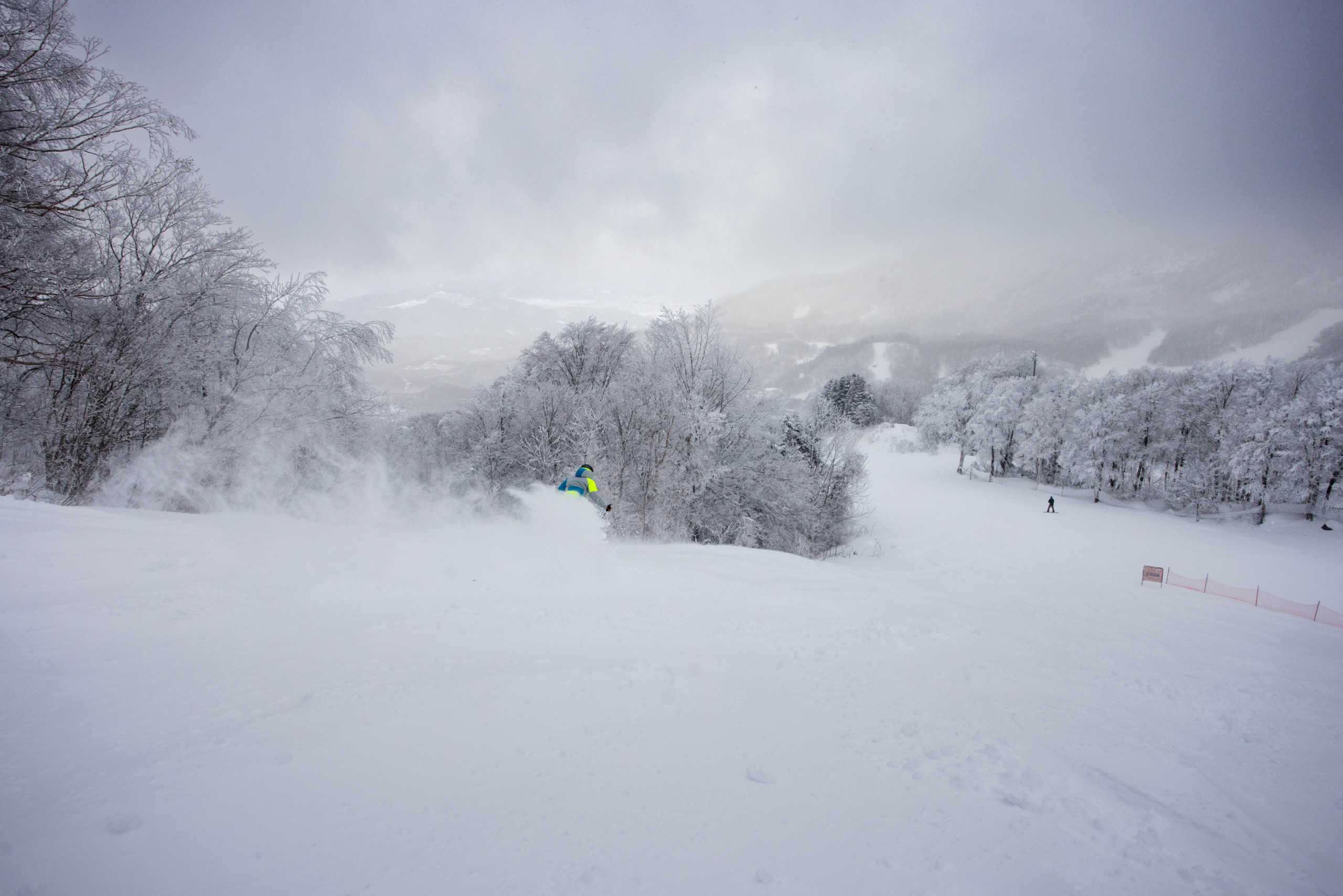
The mountain has a wide range of terrain on offer for all levels with great options for families but still plenty of opportunities to leave the kids on the green slopes and hunt down some powder.
After my day on the mountain I had my first opportunity to jump in a ‘Tohoku Onsen.’ For those who aren’t familiar, an onsen is a Japanese public bath or hot spring where it is tradition to enter naked. Now I do spend most of the winter in Nozawa Onsen, so my standard is set pretty high, however, the Tohoku onsens were a fair contender. The biggest difference up there in Northern Honshu was the amount of outdoor onsens on offer, my favourite kind.
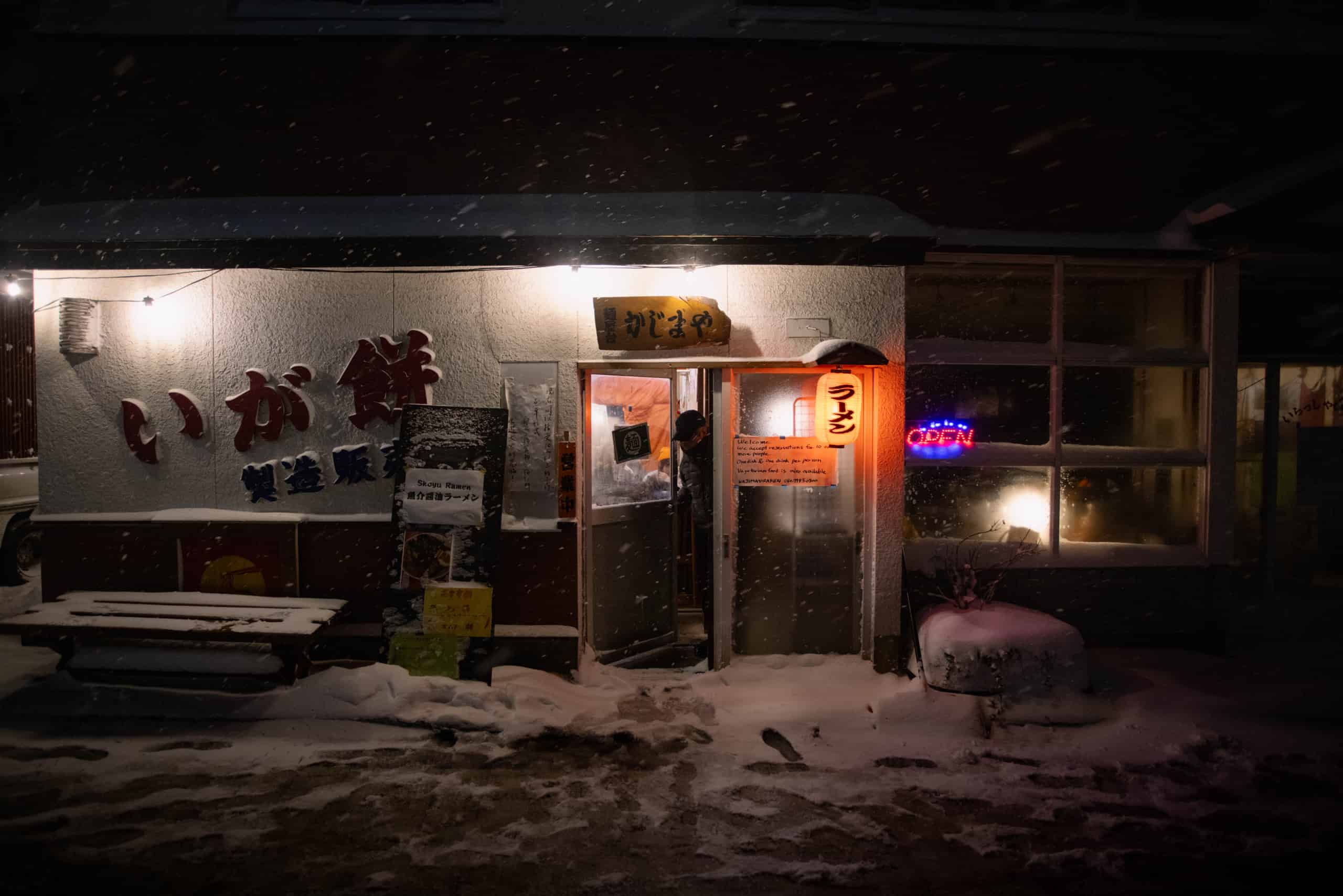
Feeling refreshed, the next itinerary item was a sake tasting at the Yamagata Sake Museum. Yamagata prefecture is known for its sake and have even developed their own specialty sake rice ‘yuki megami’ or snow goddess. We drank our sake cold, the way locals enjoy their premium drinks.
Yuki megami is used to make Yamagata Sanga. The breweries who have the privilege to use this superior rice and make Yamagata Sanga are selected by the Yamagata Sake Brewers Association. We tasted three varieties of sake and the difference in taste between the sake that had been pressed to speed up the process and the gentle process that was left to bag drip was surprisingly apparent.
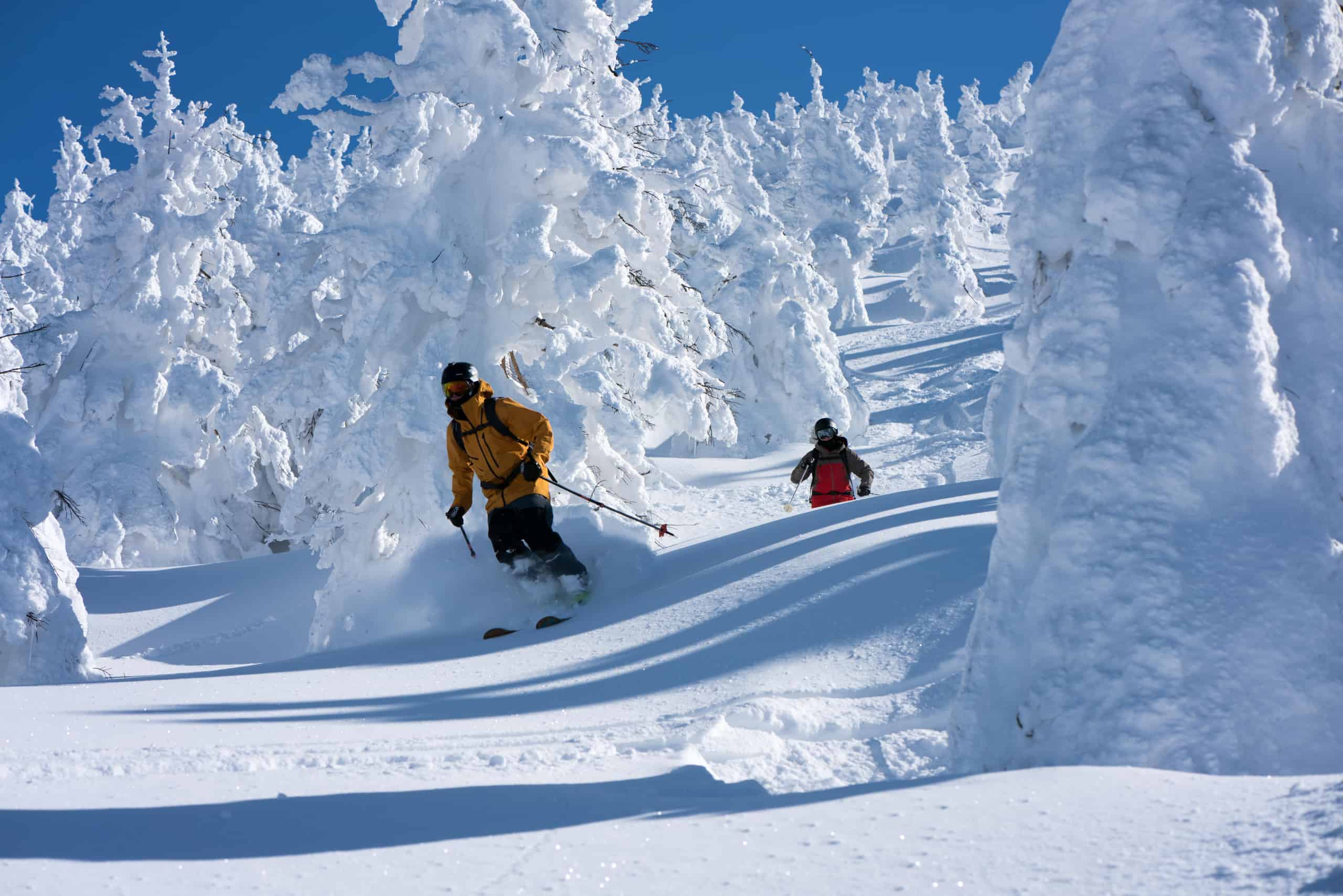
Day 2
We awoke to 50cm of snow covering the bus and headed off on a journey to the other side of the Zao mountain, driving from Yamagata prefecture to Miyagi prefecture. The first stop of the day was at the Miyagi Zao Fox Village. Here we were greeted by the furry locals and wandered freely through their snowy enclosure watching them play, sleep and fight… very cute.
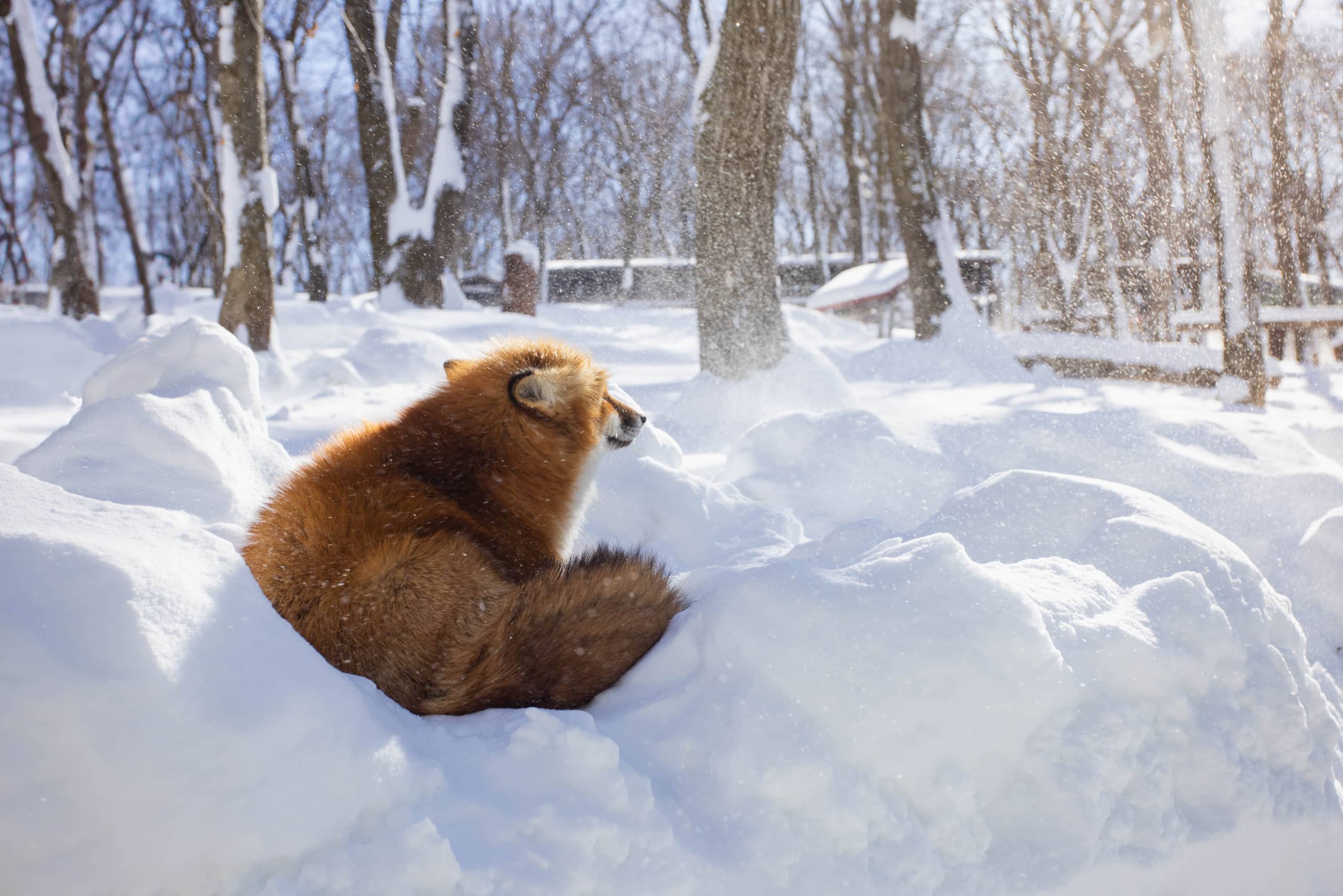
Our next stop was possibly one of my favourite locations of the entire trip, lunch at Zelkova restaurant. Zelkova is a Michelin-rated restaurant specialising in its local Sendai Beef dishes. Chef Kiyoshi Goto was so kind and happily shared the story of his career and, of course, all the details about his beef selection. Goto San only selects the highest quality A5 Wagyu beef to use in his restaurant, the best of the best. And the taste was certainly reflective of his expert selection, preparation and well deserving of that Michelin rating.
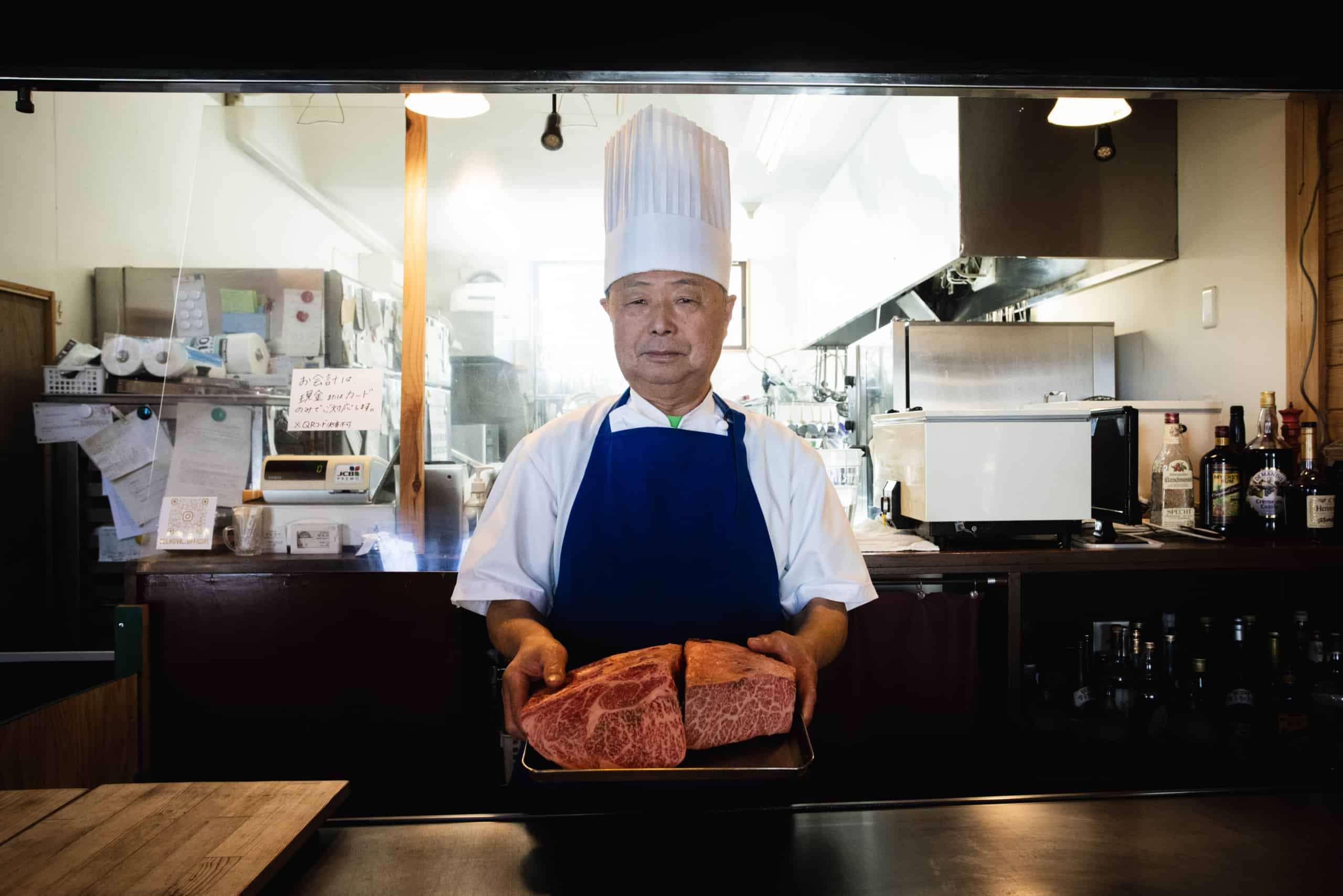
With a full stomach we jumped back in the bus and headed towards Eboshi resort. Along the way I learnt a new Japanese word, ‘jifubuki’ meaning ground blizzard as we saw the snow dancing along the roads from the wind. Well, as you can imagine, this usually isn’t a great sign for ski resort operations and as luck would have it Miyagi Zao Eboshi Ski Resort was on wind hold. Though I didn’t personally get to ski the mountain I got the low down from a representative from the resort.
Similarly to Zao Onsen, there seems to be something for everyone with both off piste black runs, a flagship 3.4km top to bottom groomed run, gentle green slopes and even some backcountry access. There is also the Miyagi Zao Sumikawa Snow Park nearby which offers snow cat rides and guided skiing through the snow monster trees.
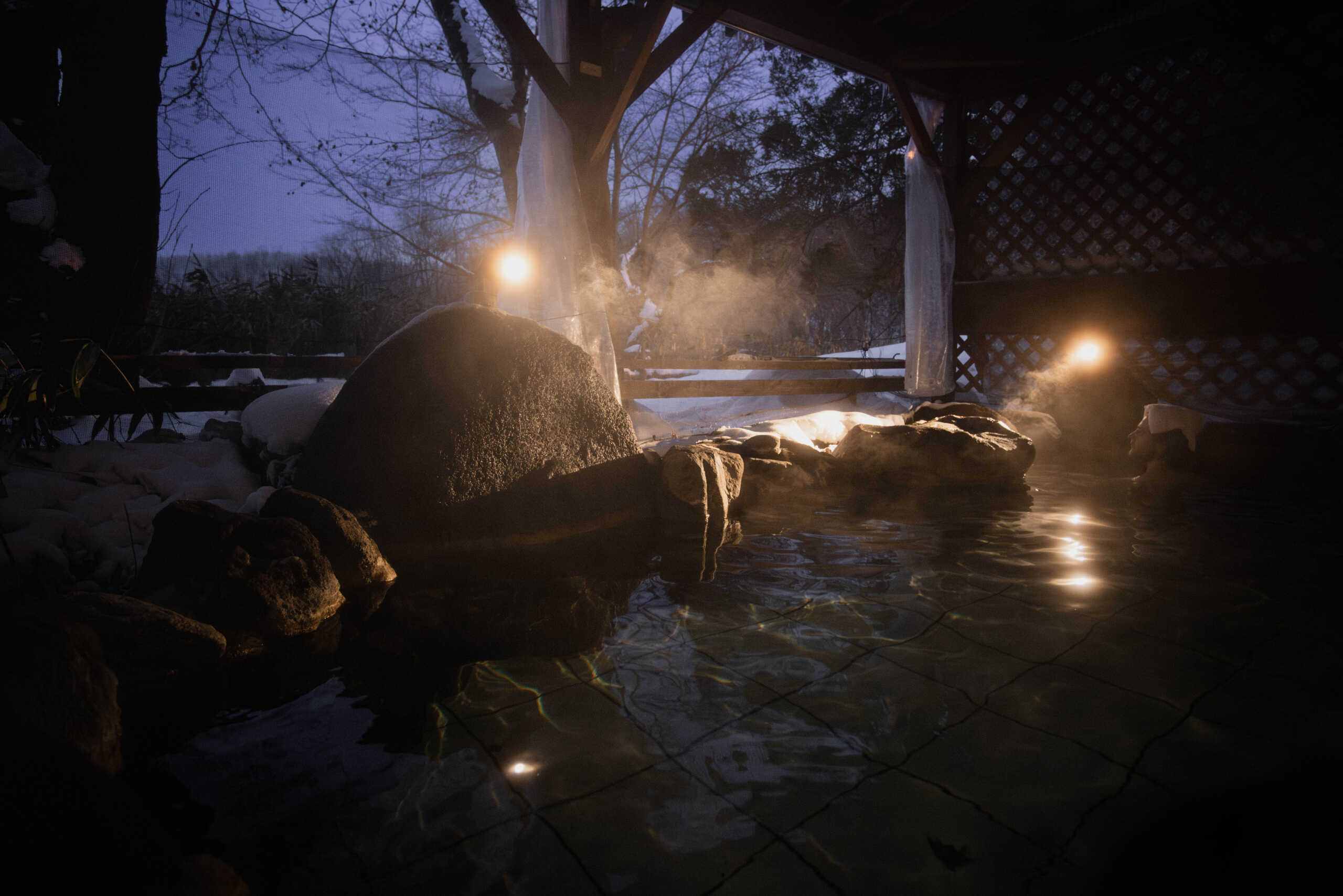
After a big travel day, I was more than ready for a bit of a wind down and what better way to do so than in another outdoor onsen at our accommodation for the night, a traditional Japanese Ryokan. This was my favourite onsen of the trip with a private bath on offer, perfect for sharing with your other half. The meal we had for dinner was hands down the most adventurous I have ever been with Japanese cuisine. It was a cultural delight with local delicacies including whole moroko fish, sweet black bean, salmon and snapper sashimi and sweet dumpling sprinkled with cocoa powder.
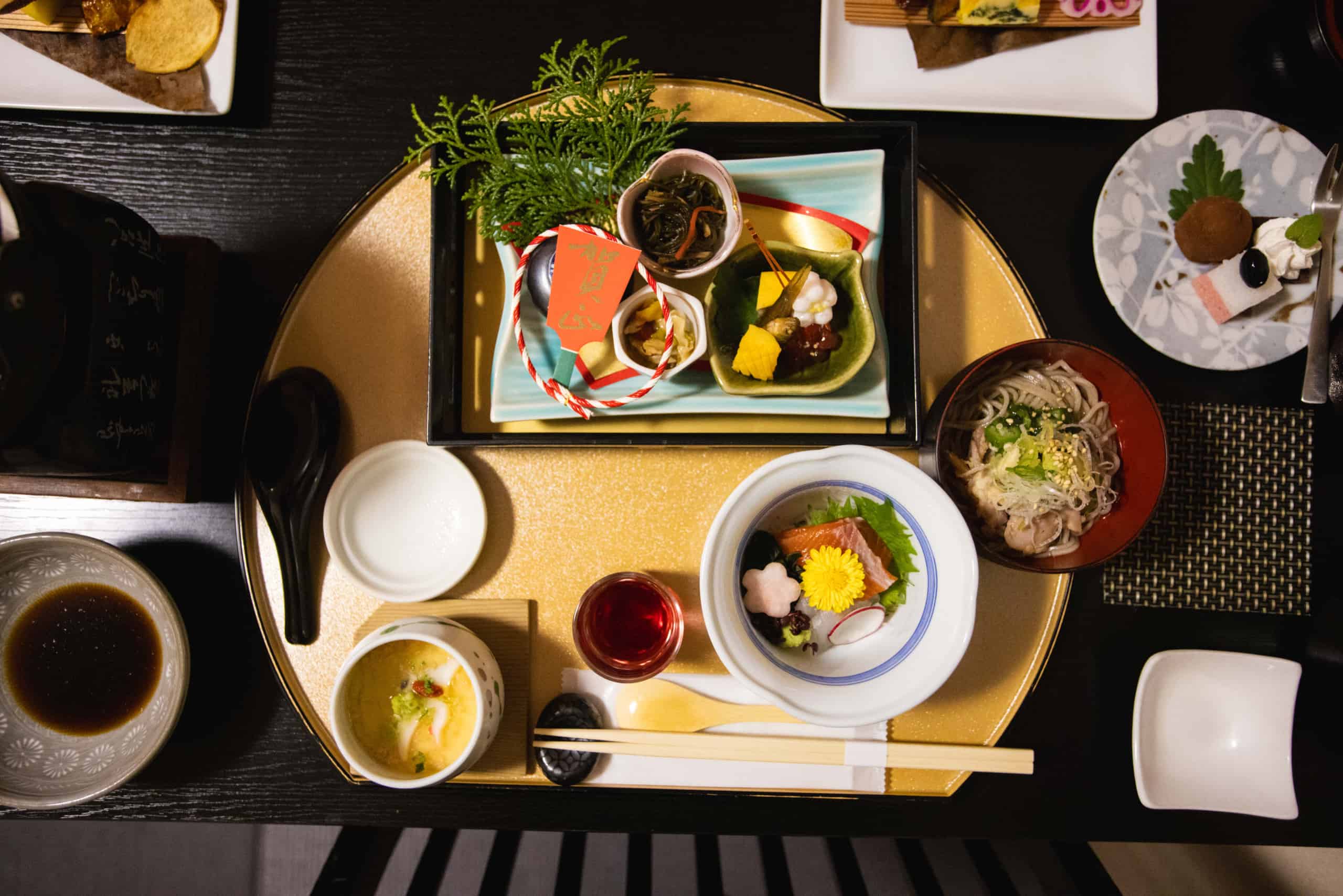
It was a huge amount of delicious food and I’d highly recommend stepping out of your culinary comfort zone and getting your taste buds into some local Japanese specialties. I was treated to the fox room for the night, a warm reminder of the furry friends we had made earlier in the day and was off to sleep in no time.
Day 3
This was going to be a big day. The itinerary had us covering a lot of ground travelling out of Miyagi prefecture and up to the second most northern prefecture of Tohoku, Akita. Luckily for us Japan has one of the most advanced railway systems in the world, the Shinkansen, affectionally know by foreigners as the bullet train. Before jumping on the bullet train, we made a quick stop off at Shiroishi Castle. This was the residence of the Katakura family, right-hand man to the famous Edo Period lord Masamune Date, the ‘One Eyed Dragon.’
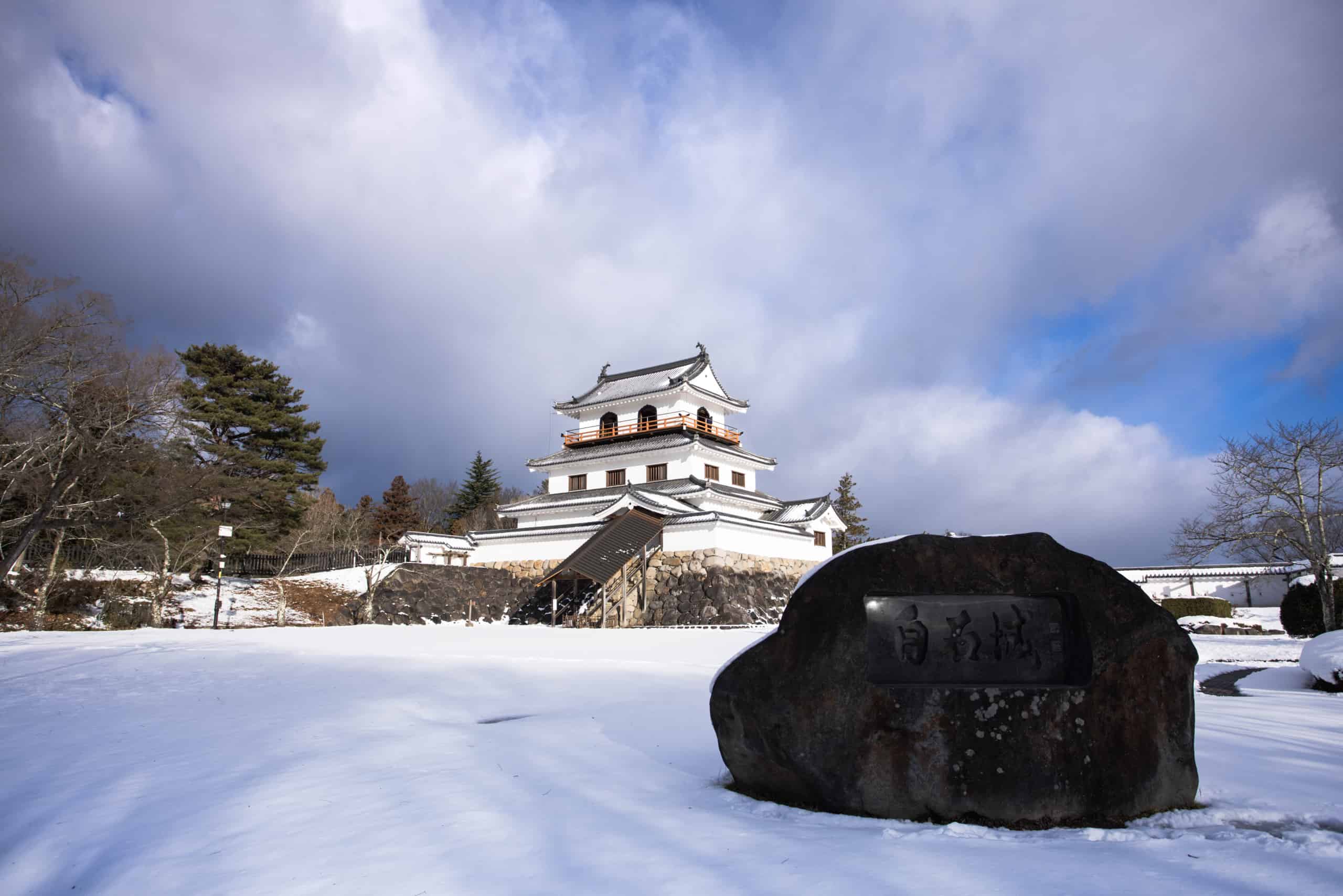
Here I had the humbling experience of trying on the armour of a samurai lord and learning how to handle my ‘katana.’ Let’s just say that if I was around in 16th century Japan I would not have lasted very long. With my pure lack of samurai talent uncovered it was time to head north on the Shinkansen to Akita prefecture, home of the Akita dog!
We arrived at Tazawako station and drove over to Lake Tazawa, Japan’s deepest lake. Eating lunch at the Restaurant ORAE and Brewery we looked out over the lake into a moody winter snow globe as if the scenery were a black and white ink drawing. There’s something I always find inherently peaceful about snow falling in an aquatic environment, whether that be a lake or the ocean, and this was no exception.
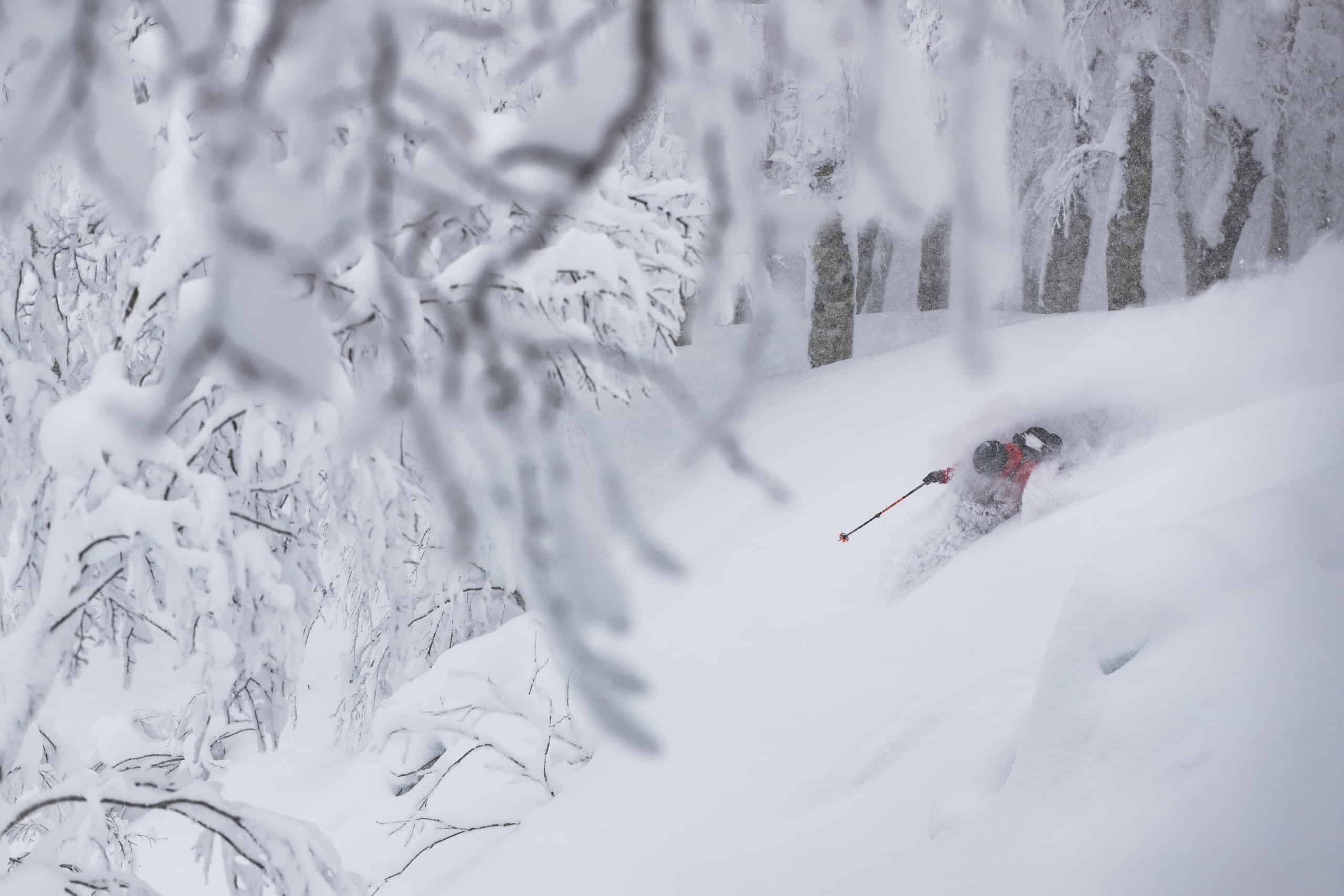
Ani Ski Resort was next on the list and though it had been dumping with snow for the past 48hrs, thanks to our large travel day, we unfortunately did not have enough time to get out there for a ski. We drove up a winding mountain road lined with avalanche barriers full of powder and roadside touring treats teasing me. Though I didn’t get to ski here the locals assured me that they had the best powder snow, much like the promise of any Japanese resort. I guess I’ll have to head back for a sample of the goods.
Our hotel for the night was the Tazawako Lake Resort and Onsen, a large, all-inclusive hotel with buffet style dinner. They catered for a variety of cuisines and of course I gave just about everything a try. I learnt another new Japanese word after loading up my plate with desserts… ‘betsubara’ how the Japanese say dessert stomach, there is always room for dessert. Food satisfaction seemed to be a common theme of this trip and so once again, with a full stomach I headed to get some rest for my final day of the trip.
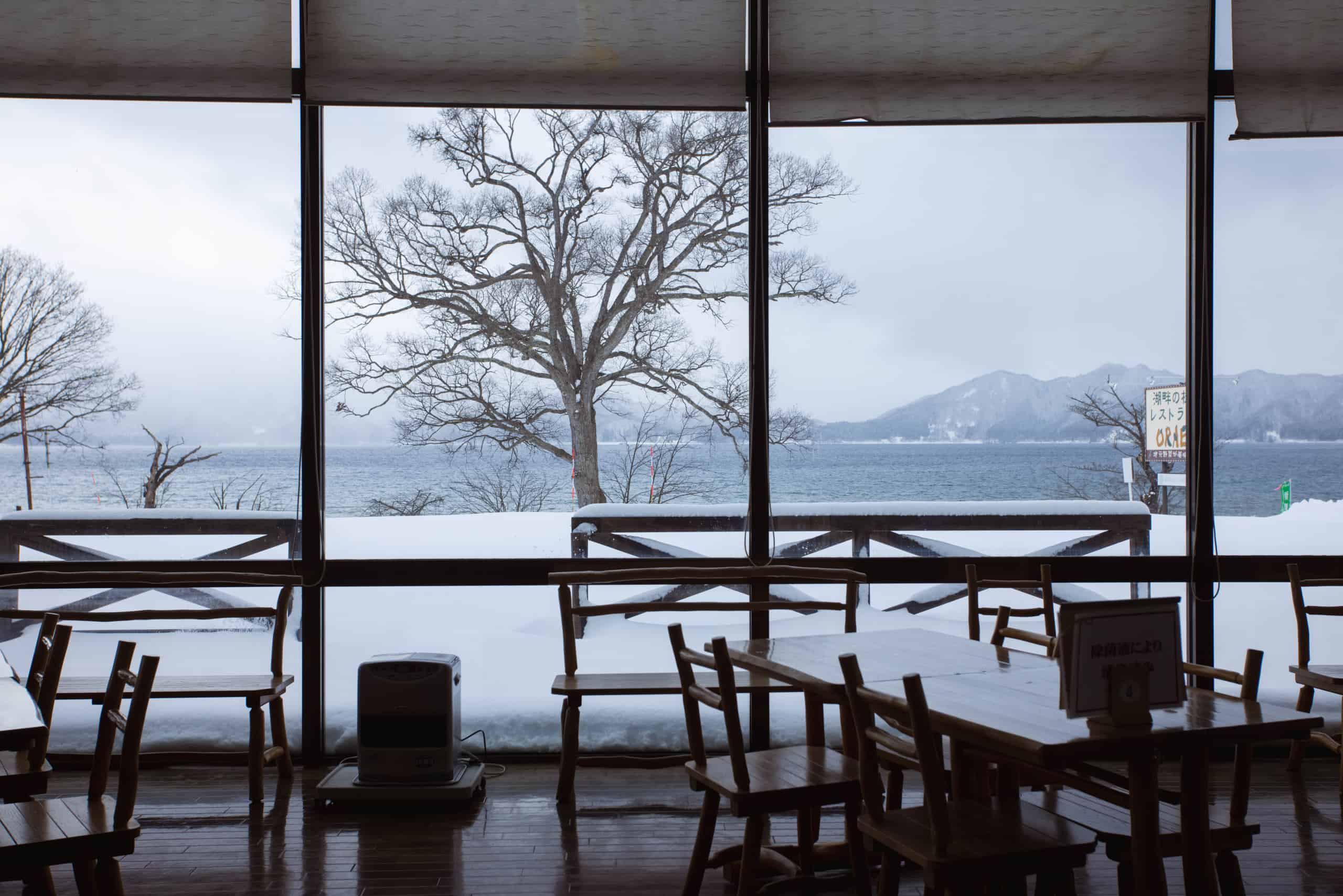
Day 4
So, it was the final day of my trip and I finally had another opportunity to get out on the mountain! With over a metre of snow falling in the region over the past three days I was itching to get some face shots and Tazawako Snow Resort is just a 15-minute drive from our hotel. It is the largest ski resort in Akita prefecture with plenty of options for all abilities. Each run had a gorgeous view of Lake Tazawa and was lined with some pretty well-spaced trees… Having missed out on skiing at two of the resorts we visited I may have ‘accidentally’ stayed on the mountain a little longer than the itinerary allowed for, but it was so worth it. The powder was some of the best quality I had ever skied.
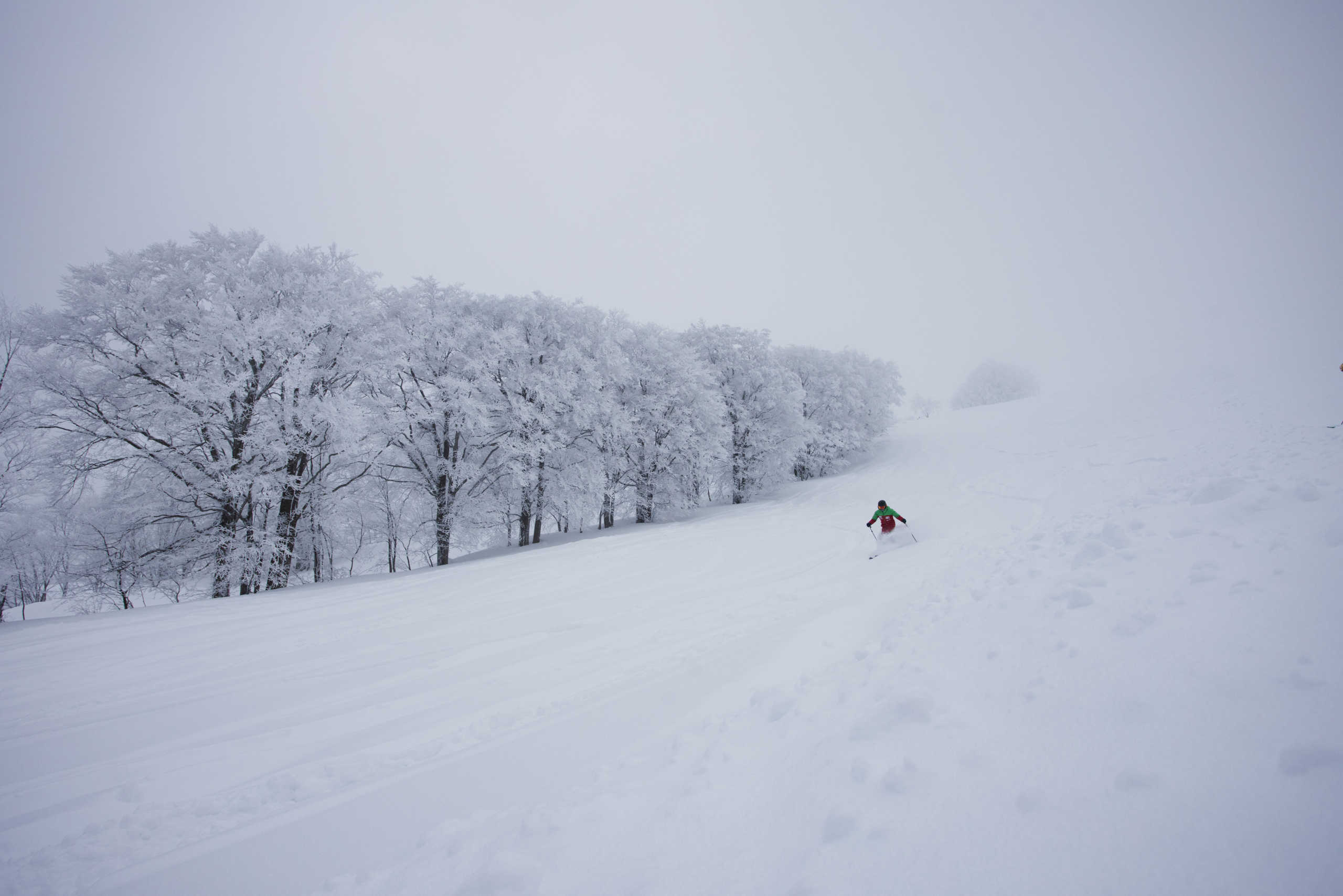
Being further north than Nagano, where I have spent most of my time in Japan, the snow was colder, lighter and dryer than just about anything I had experienced before. At the top of the mountain there is access to some enticing backcountry which is just a short skin out of the resort. While the resort offers plenty of untracked snow for days after a storm, there are also guided tours available to get you out of the resort and guarantee some fresh lines.
Feeling pretty satisfied with my Northern Tohoku skiing and already making mental plans to return, it was time to get back into those culture experiences. Next on the list was Ando Brewery, an artisan soy sauce and miso brewery. Living in Japan soy sauce and miso are two ingredients you consume daily and I realised I had no idea how either of them are produced, this was going to be interesting.
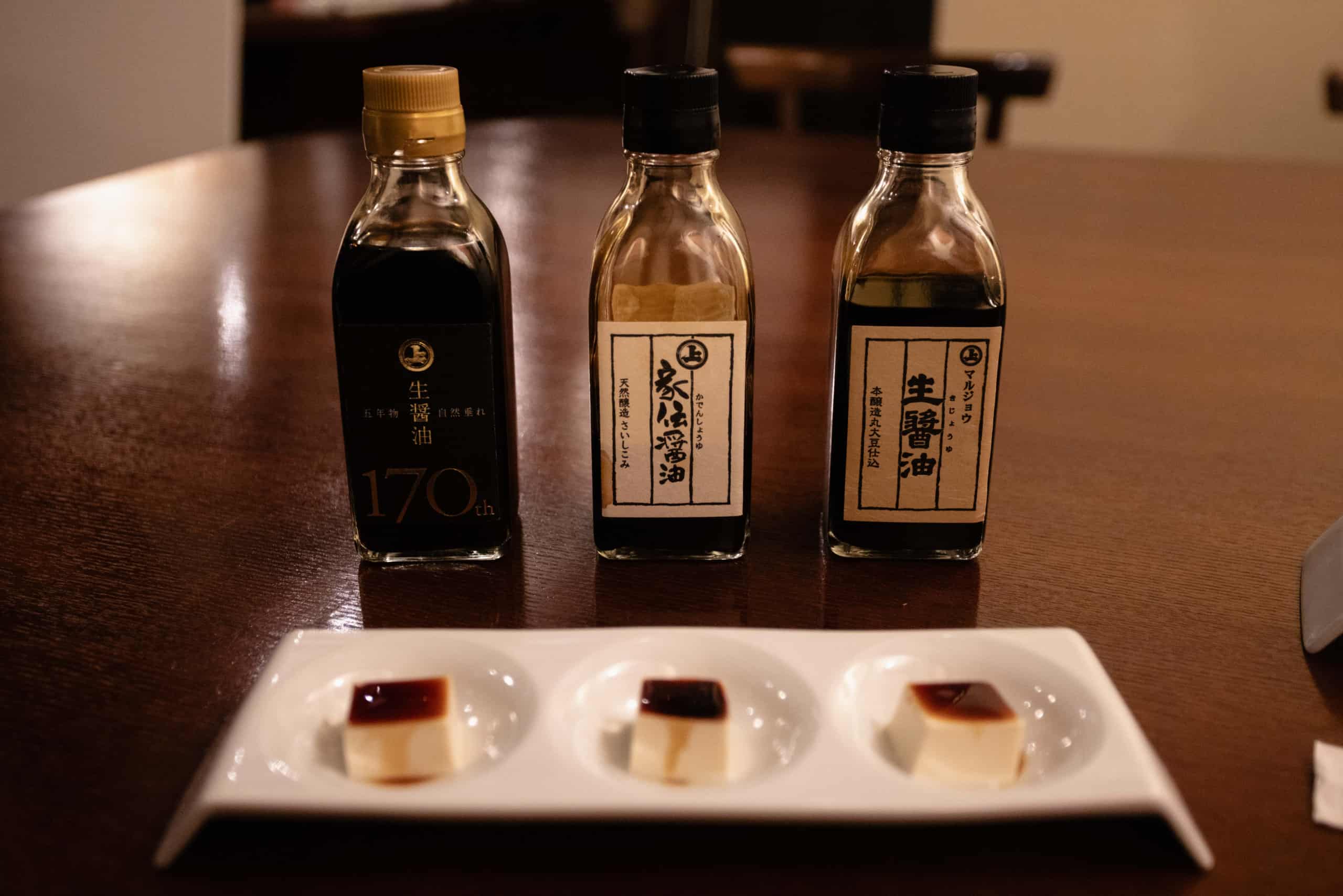
We met with Yusuke Ando a 7th generation brewer running his 170-year-old family business. I was surprised to learn that soy sauce and miso were produced in a very similar manner, both starting with a mix of soybeans and salt, fermenting for a year before being packaged as miso or then being pressed to squeeze the liquid out for soy sauce. I was treated to a soy sauce tasting and much like the sake tasting I couldn’t believe the difference between production methods. Not all soy sauces are created equal!
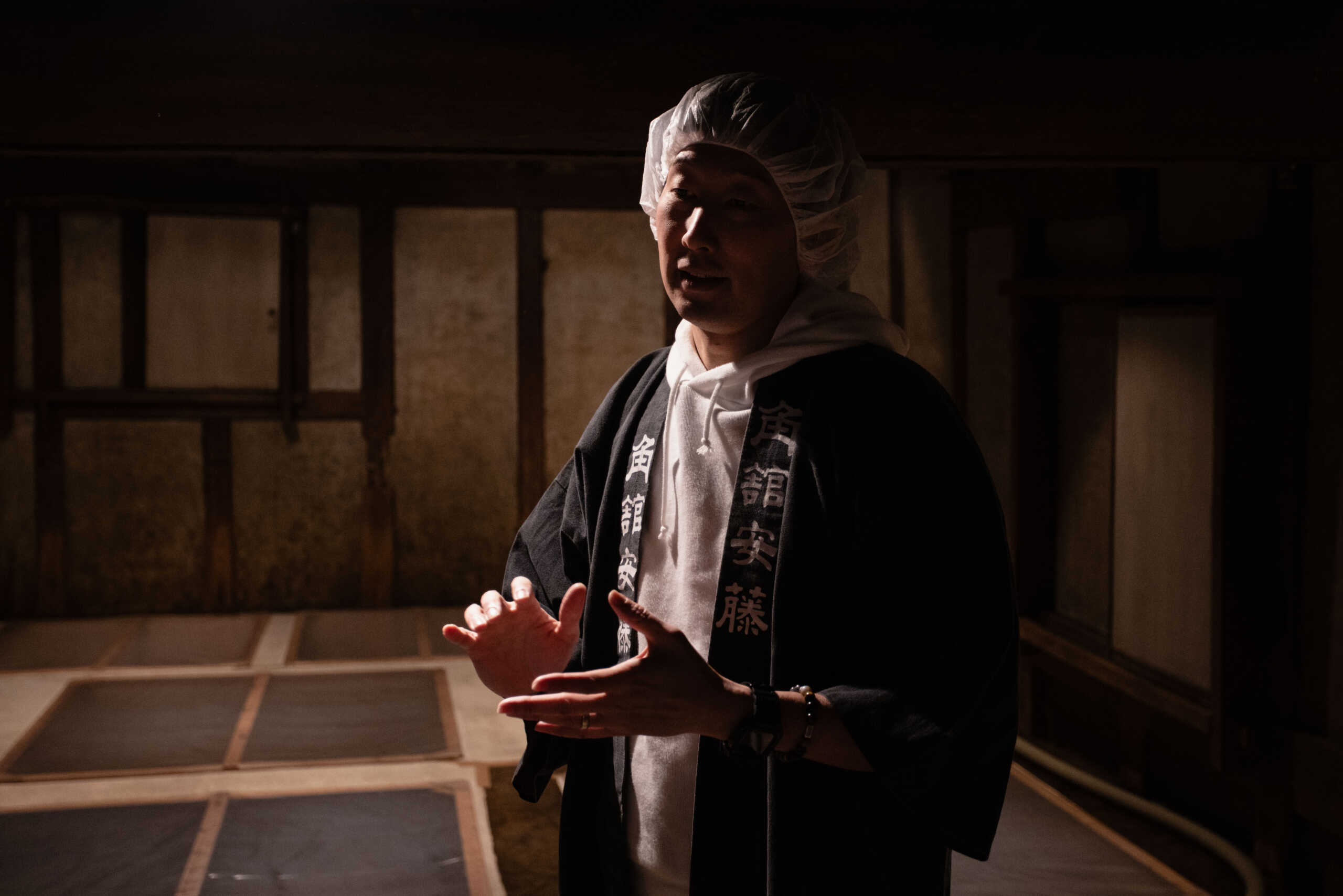
The final stop of my trip was a stroll through the Kakunodate Samurai District. The architecture was incredibly delicate and beautiful, and I was informed that the more detail the front gate had the higher ranked the samurai was. I thought back to my Samurai warrior experience… I would certainly not have any sort of fancy front gate, if one at all! The town was full of ‘sakura’ or cherry blossom trees and would be a pretty special place to visit in spring time.
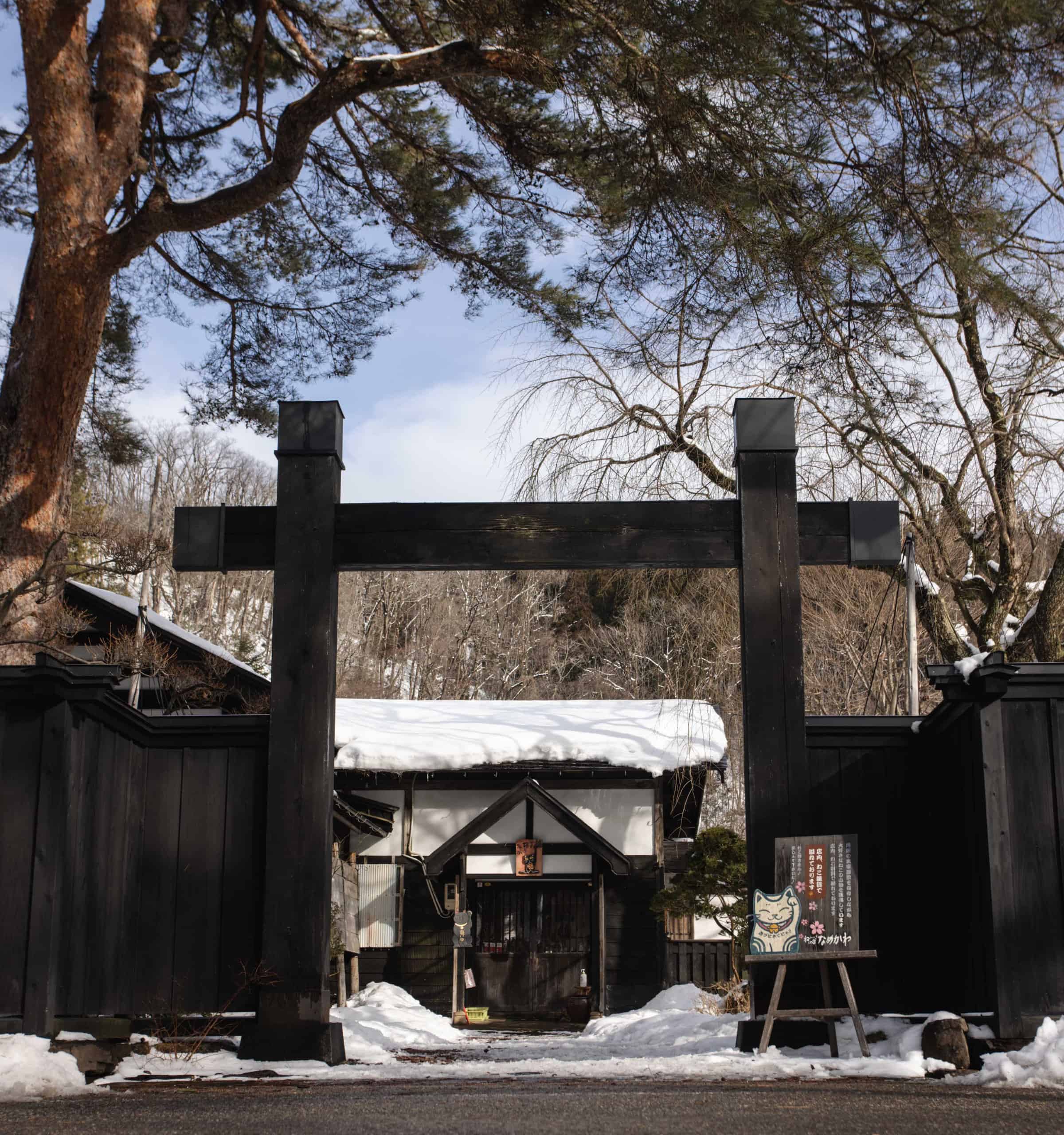
The locals were specialists in working with sakura bark, a skill passed down from Samurai warriors who spent weeks out in the forest and formed a strong connection with the trees and the earth. We met craftsman Kurisu San who was working on some sakura bark pieces including sake glasses.
Well, as you can see there was a lot going on in just four days on this trip. I embraced Japanese culture and cuisine more than ever before and learnt so much about the local people and traditions.
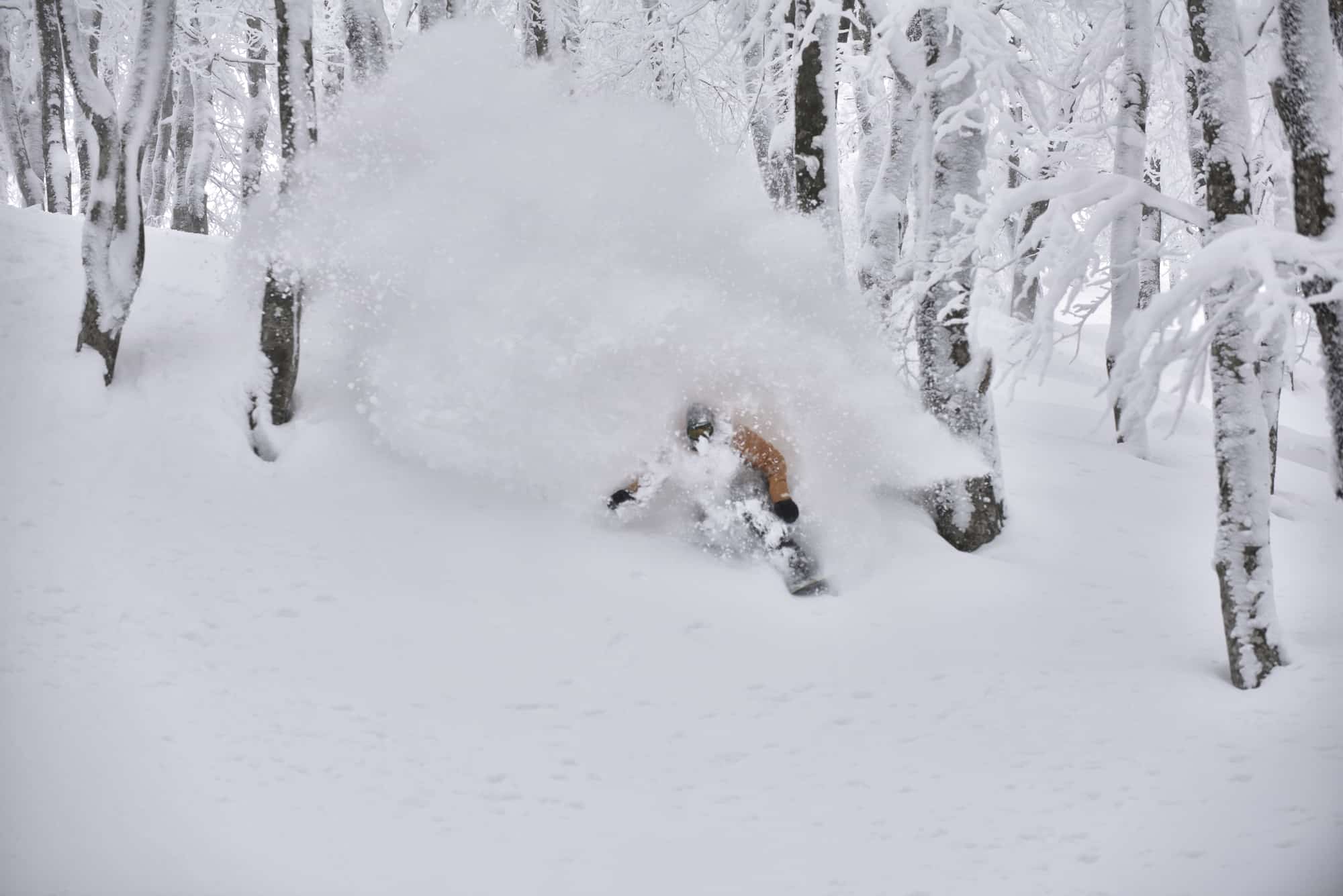
So, who is a trip to Tohoku for? If you’re looking to experience the real Japan, tradition, deep culture, delicious Japanese food and of course, incredible snow quality then this is the place for you. Tohoku is a true Japanese adventure and place where you can escape the western influence of more popular tourist destinations. I’d happily make the trip back north in a heartbeat. If you need help designing a custom Japanese snow and cultural adventure reach out to Mountainwatch Travel for the local insight.


